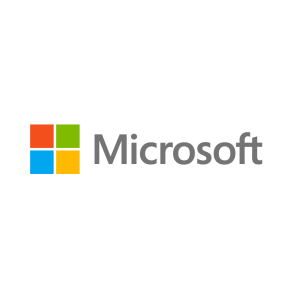Description
Course Content
- Introducing Google Cloud
- Resources and Access in the Cloud
- Virtual Machines and Networks in the Cloud
- Storage in the Cloud
- Containers in the Cloud
- Applications in the Cloud
- Developing and Deploying in the Cloud
- Logging and Monitoring in the Cloud
- Course Review and Summary
Who should attend
- Individuals planning to deploy applications and create application environments on Google Cloud.
- Systems operations professionals, Solution Architects getting started with Google Cloud, and developers.
- Executives and business decision makers evaluating the potential of Google Cloud to address their business needs.
Certifications
This course is part of the following Certifications:
- Google Cloud Certified Associate Cloud Engineer
- Google Cloud Certified Professional Cloud Architect
- Google Cloud Certified Professional Cloud Network Engineer
- Google Cloud Certified Professional Cloud Developer
- Google Cloud Certified Professional Cloud Security Engineer
Prerequisites
Familiarity with application development, systems operations, Linux operating systems is helpful in understanding the technologies covered.
Course Objectives
- Identify the purpose and value of Google Cloud products and services.
- Choose among and use application deployment environments on Google Cloud: App Engine, Google Kubernetes Engine, and Compute Engine.
- Choose among and use Google Cloud storage options: Cloud Storage, Cloud SQL, Cloud Bigtable, and Firestore.
- Interact with Google Cloud services.
- Describe ways in which customers have used Google Cloud.
Outline: Google Cloud Fundamentals: Core Infrastructure (GCF-CI)
Module 01: Introducing Google Cloud
Objectives
- Identify the advantages of Google Cloud.
- Define the components of Google’s network infrastructure, including: Points of presence, data centers, regions, and zones.
- Classify the difference between Infrastructure-as-a-Service (IaaS) and Platform-as-a-Service (PaaS).
Activities
- Quiz
Module 02: Resources and Access in the Cloud
Objectives
- Identify the purpose of projects on Google Cloud.
- Define the purpose of and use cases for Identity and Access Management..
- List the methods of interacting with Google Cloud.
Activities
- Quiz, (Lab) Getting Started with Cloud Marketplace
Module 03: Virtual Machines and Networks in the Cloud
Objectives
- Identify the purpose of and use cases for Google Compute Engine.
- Define the basics of networking in Google Cloud.
Activities
- Quiz, (Lab) Getting Started with VPC Networking
Module 04: Storage in the Cloud
Objectives
- Classify the purpose of and use cases for Cloud Storage, and database option available in Google Cloud
- Distinguish between Google Cloud’s storage options
Activities
- Quiz, (Lab) Getting Started with Cloud Storage and Cloud SQL
Module 05: Containers in the Cloud
Objectives
- Define the concept of a container and identify uses for containers.
- Identify the purpose of and use cases for Google Kubernetes Engine and Kubernetes.
Activities
- Quiz, (Lab) Getting Started with GKE
Module 06: Applications in the Cloud
Objectives
- Identify the purpose of and use cases for Google App Engine
- Contrast the App Engine Standard environment with the App Engine Flexible environment.
- Identify the purpose of and use cases for Google Cloud Endpoints.
- Identify the purpose and use cases for Cloud Run.
Activities
- Quiz, (Lab) Hello Cloud Run
Module 07: Developing and Deploying in the Cloud
Objectives
- Describe how Cloud Source Repositories and Cloud Functions can support application development on Google Cloud.
- Explain how template-based creation and management of resources leverages a template to produce efficient app deployment and management.
Activities
- (Lab) Automating Deployment of Infrastructure using Terraform
Module 08: Logging and Monitoring in the Cloud
Objectives
- Define SLIs, SLOs, and SLAs.
- Identify the purpose of integrated monitoring, alerting, and debugging.
Activities
- Quiz, Course Feedback
Module 09: Course Review and Summary
Objectives
- Module 1–8 Review
- Additional Learning Paths




